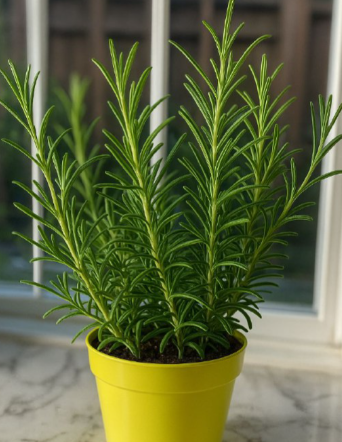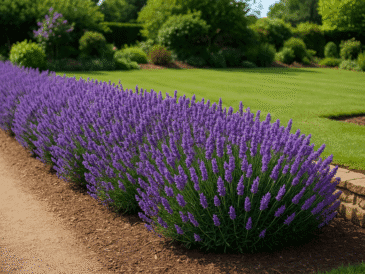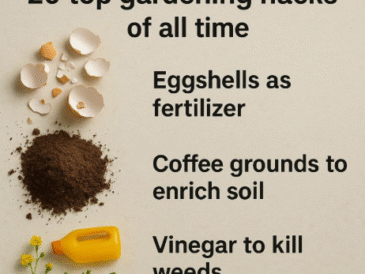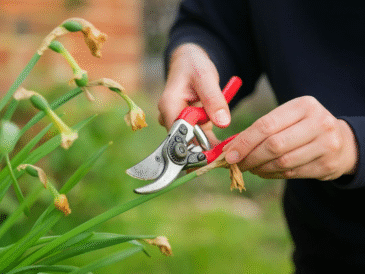Rosemary (Rosmarinus officinalis) is a beloved herb known for its needle-like leaves, woody scent, and culinary versatility. It’s a favorite among gardeners not only for its robust flavor but also for its ornamental beauty and natural pest-repelling qualities. This Mediterranean native thrives in sunny, well-drained environments and requires minimal care once established. However, despite its hardy nature, rosemary does not get along with every plant in the garden.
Incompatible plant pairings can lead to stunted growth, pest issues, and imbalanced soil conditions. To get the most out of your herb garden or mixed planting bed, it’s essential to understand which companions may hinder rosemary’s success. This article explores the key plants you should avoid planting near rosemary and explains why these combinations might do more harm than good.
Why Companion Planting Matters
Companion planting is a time-tested gardening practice that involves placing plants together based on their ability to support each other’s growth. Some plants improve soil health, attract beneficial insects, or provide shade and support for neighboring crops. On the other hand, poor companions may compete for water, space, or nutrients, or attract harmful pests.
Rosemary’s particular needs—such as dry soil, full sun, and low humidity—mean that not all plants make good neighbors. Here are four plants you should avoid growing near rosemary.
1. Basil and Rosemary: A Mismatch in Moisture Needs
At first glance, basil and rosemary seem like an ideal duo. Both are herbs, commonly used together in Mediterranean dishes. However, their gardening preferences are worlds apart.
Why They Don’t Work Together:
- Soil and Watering Conflict: Basil thrives in moist, nutrient-rich soil and needs frequent watering to flourish. Rosemary, by contrast, is drought-tolerant and prefers well-drained, sandy soil. Pairing them forces a compromise that can cause one or both plants to suffer.
- Humidity Disparity: Basil prefers a more humid environment, while rosemary does better in dry conditions. Planting them side-by-side can create microclimate issues that lead to mildew or root rot.
Best Practice: Plant basil in a separate, moisture-retaining container or bed. Keep rosemary in a dry, elevated area to meet its drainage needs.
2. Cucumbers and Rosemary: Water and Pest Issues
Cucumbers are prolific growers, requiring plenty of space, sunlight, and—most importantly—consistent moisture. While they share rosemary’s love of the sun, the rest of their needs are at odds.
Why They Don’t Work Together:
- Competing Water Requirements: Cucumbers are heavy drinkers. Their constant thirst can oversaturate the soil, harming rosemary’s roots and encouraging fungal diseases.
- Pest Attraction: Rosemary, while often used as a pest deterrent, can sometimes attract pests like spider mites and aphids. These pests may move to the tender cucumber vines, compromising their health.
Best Practice: Grow cucumbers in their own well-irrigated plot, ideally with companion plants like beans or dill that suit their needs.
3. Tomatoes and Rosemary: Nutrient Competition
Tomatoes are among the most common garden crops, but they demand a lot from the soil—water, nutrients, and space. Though they enjoy the sun like rosemary, their other requirements create friction.
Why They Don’t Work Together:
- Soil Incompatibility: Tomatoes prefer rich, loamy soil that retains moisture, while rosemary grows best in lean, sandy soil. Sharing a bed leads to nutrient imbalances.
- Growth Competition: As tomatoes grow large and bushy, they may overshadow rosemary and deprive it of airflow and sunlight.
- Different Feeding Schedules: Tomatoes need regular feeding with compost or fertilizers, which can oversaturate the soil and harm rosemary’s roots.
Best Practice: Keep tomatoes in a compost-rich, well-mulched area. Plant rosemary separately to maintain dry soil conditions and prevent competition.
4. Potatoes and Rosemary: A Risky Pest Magnet
Potatoes are root vegetables that need loose, fertile soil and ample water to grow properly. While rosemary is sometimes used as a pest deterrent, it can inadvertently attract the wrong kind of attention when near potatoes.
Why They Don’t Work Together:
- Shared Pests: Rosemary can draw Colorado potato beetles, which specifically target potato crops. These pests can cause extensive damage and are hard to eradicate once established.
- Soil Moisture Conflict: Like cucumbers, potatoes need consistent moisture. Rosemary, again, prefers it dry. This imbalance can lead to root stress or fungal diseases in either plant.
Best Practice: Grow potatoes in well-watered, loamy soil with companions like horseradish or beans. Place rosemary in a dry, isolated corner of the garden.
The Bottom Line: Plan Thoughtfully for Garden Harmony
Understanding which plants to keep away from rosemary is just as important as knowing which ones to grow beside it. Good companion planting practices can boost plant health, reduce pest problems, and improve your overall garden productivity.
To ensure rosemary thrives:
- Provide full sunlight.
- Use sandy or well-drained soil.
- Avoid overwatering.
- Keep it separate from moisture-loving or nutrient-demanding plants.
While rosemary is an independent and hardy herb, it still depends on the right conditions and thoughtful spacing to thrive. By avoiding incompatible neighbors, you can help rosemary—and your entire garden—reach its full potential.




